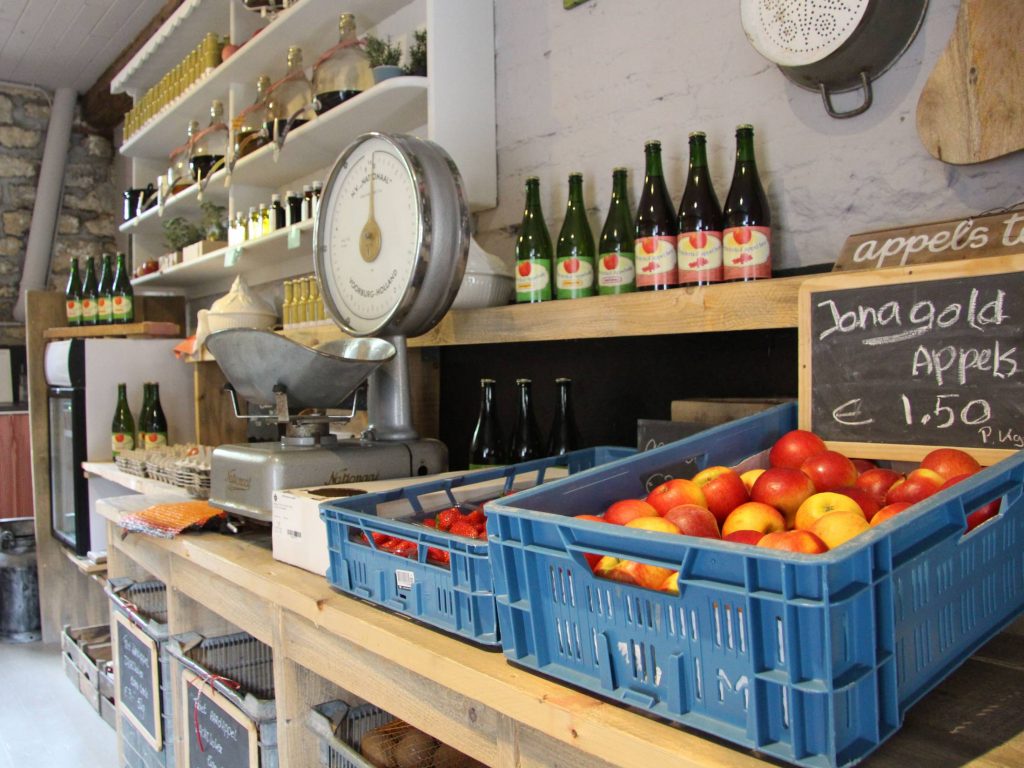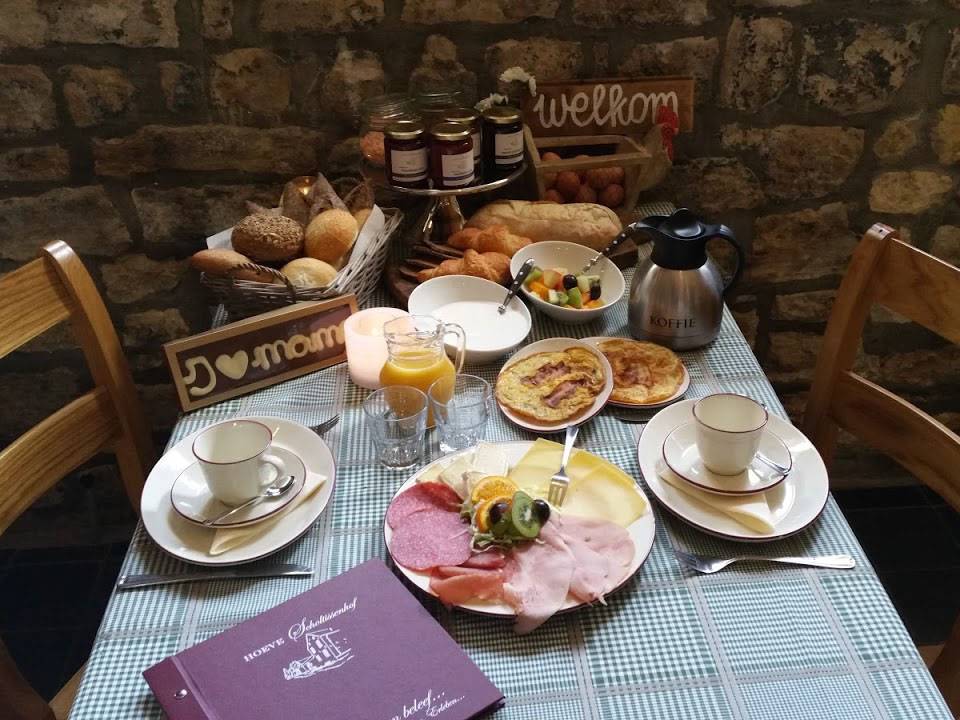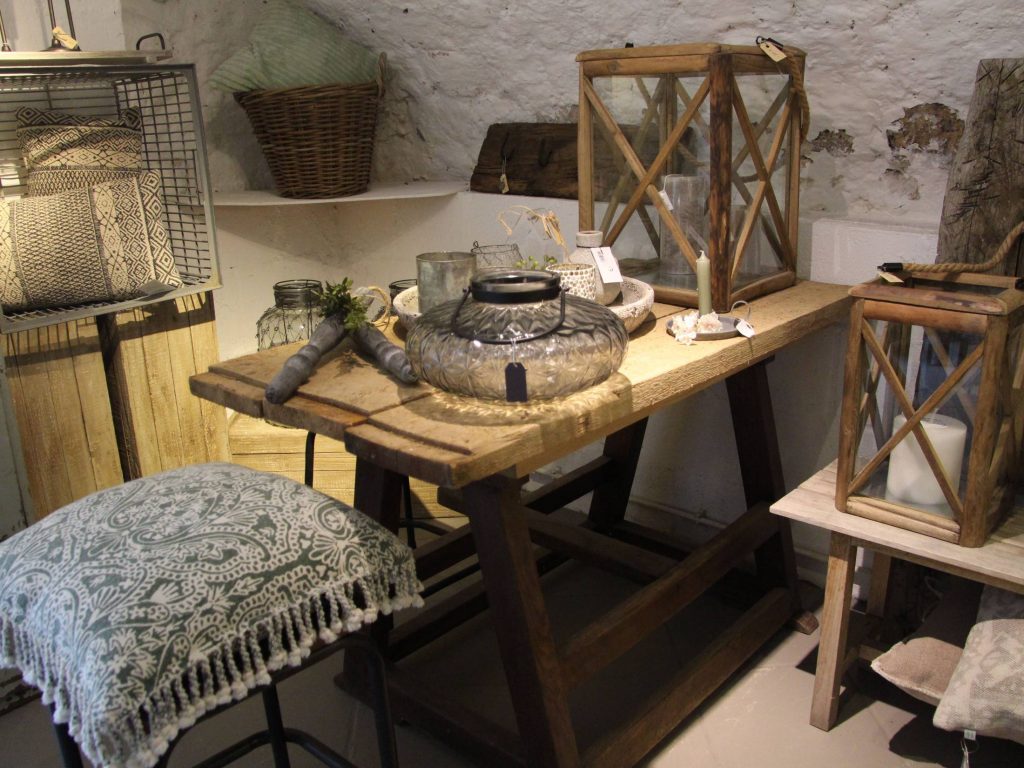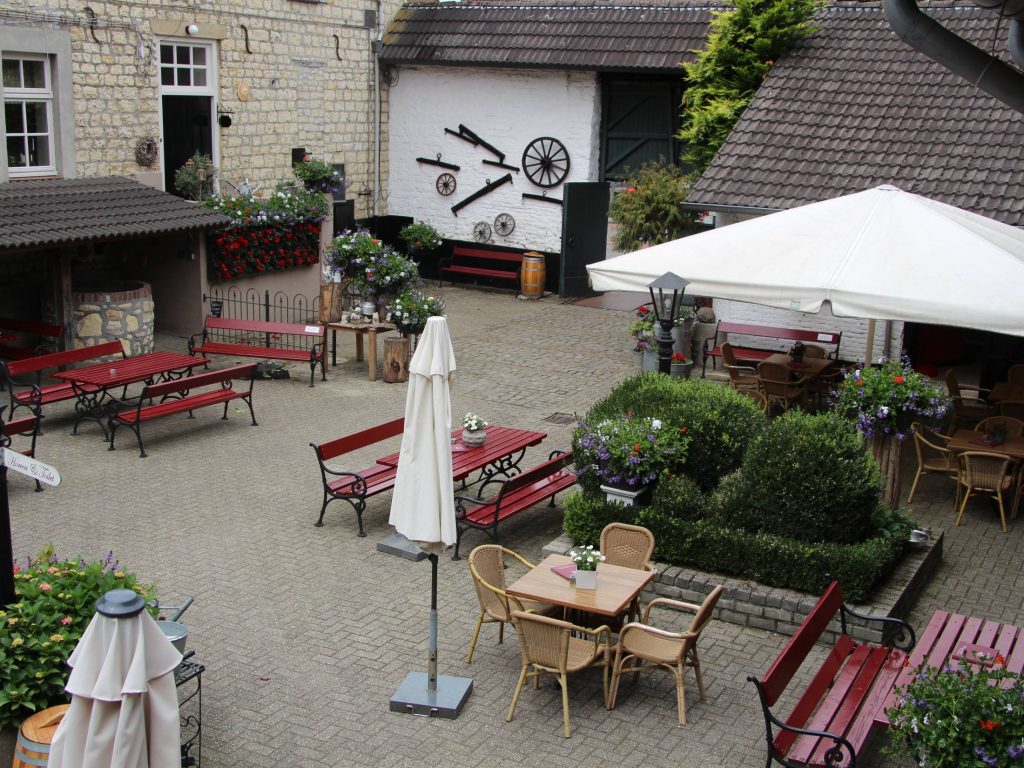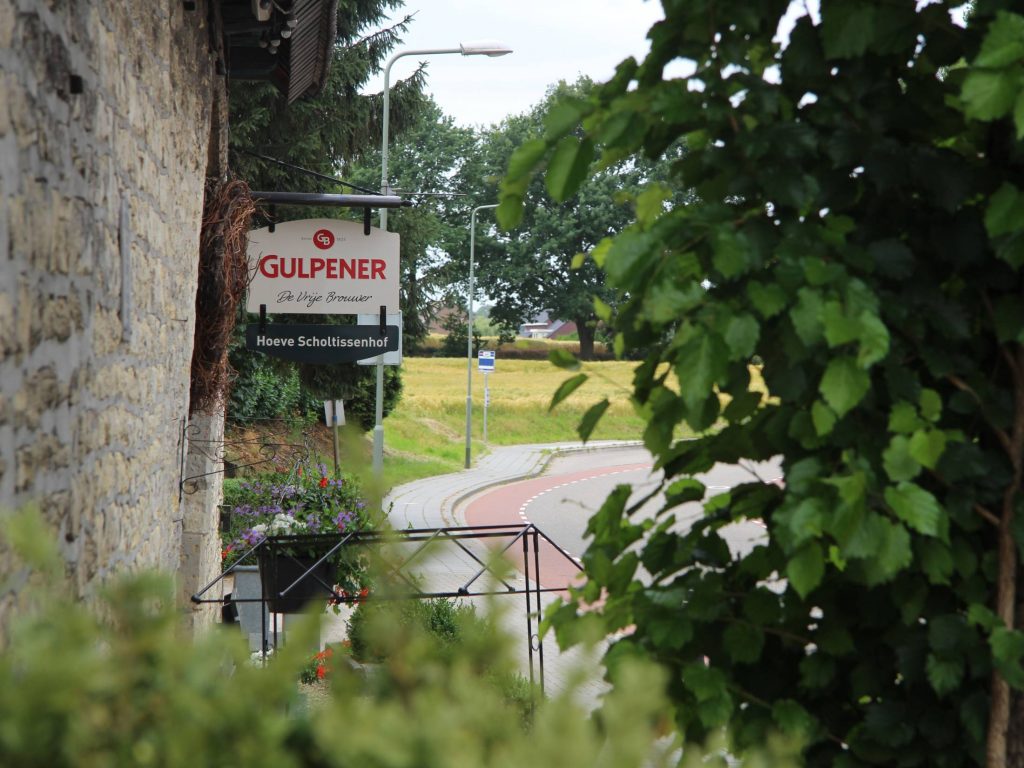Walking through Roman Bocholtz with a guide
Scholtissenhof, Bocholtz
The Scholtissenhof is the perfect starting point to discover Bocholtz’s rich Roman past. In the Middle Ages, this square farmstead was built for the local sheriff out of Kunrader stone, a type of limestone that the Romans in this region had already used to build their villas.
In the “Roman cellar” of the Scholtissenhof, you will meet Juno, a girl who moved here with her parents from Rome. They brought many things unknown in the region at the time: her mother’s jewellery, her father’s clothes, coins, and even chickens.
From the Scholtissenhof, a guided village walk begins. The guide conjures up the Roman Villa Vlengendaal in your imagination, shows you the Bocholtz urn, leads you through the beautiful landscape, and tells lively stories about Bocholtz in Roman times and beyond. The walk ends back at the Scholtissenhof, where you can enjoy an ice cream or a slice of vlaai.
Discover
- Discover Roman Bocholtz with a village guide
- Taste Italy in Scholtissenhof’s homemade ice cream
Fun to know
- Kunrader stone: the Romans’ building stone
- Kunrader stone occurs only in one place worldwide: the Kunrader quarry in Voerendaal. The Celts in this region built with wood, clay, and reed, but the Romans constructed virtually indestructible stone buildings. In South Limburg, they often used Kunrader stone – a solid tradition still alive today.
- Roman fashion
- In Roman times, people here did not immediately wear the classical toga. Clothing was a blend of local and Roman styles. It was also too cold to dress fully in Roman fashion. The tunica, a long garment, formed the basis. Fabric was expensive, so the more layers of fabric you wore, the wealthier you appeared. In this region, wool was the main fabric, with some use of linen. Clothes were dyed with plant-based pigments: yellow and green were common, while blue and red were expensive “luxury” colours.
